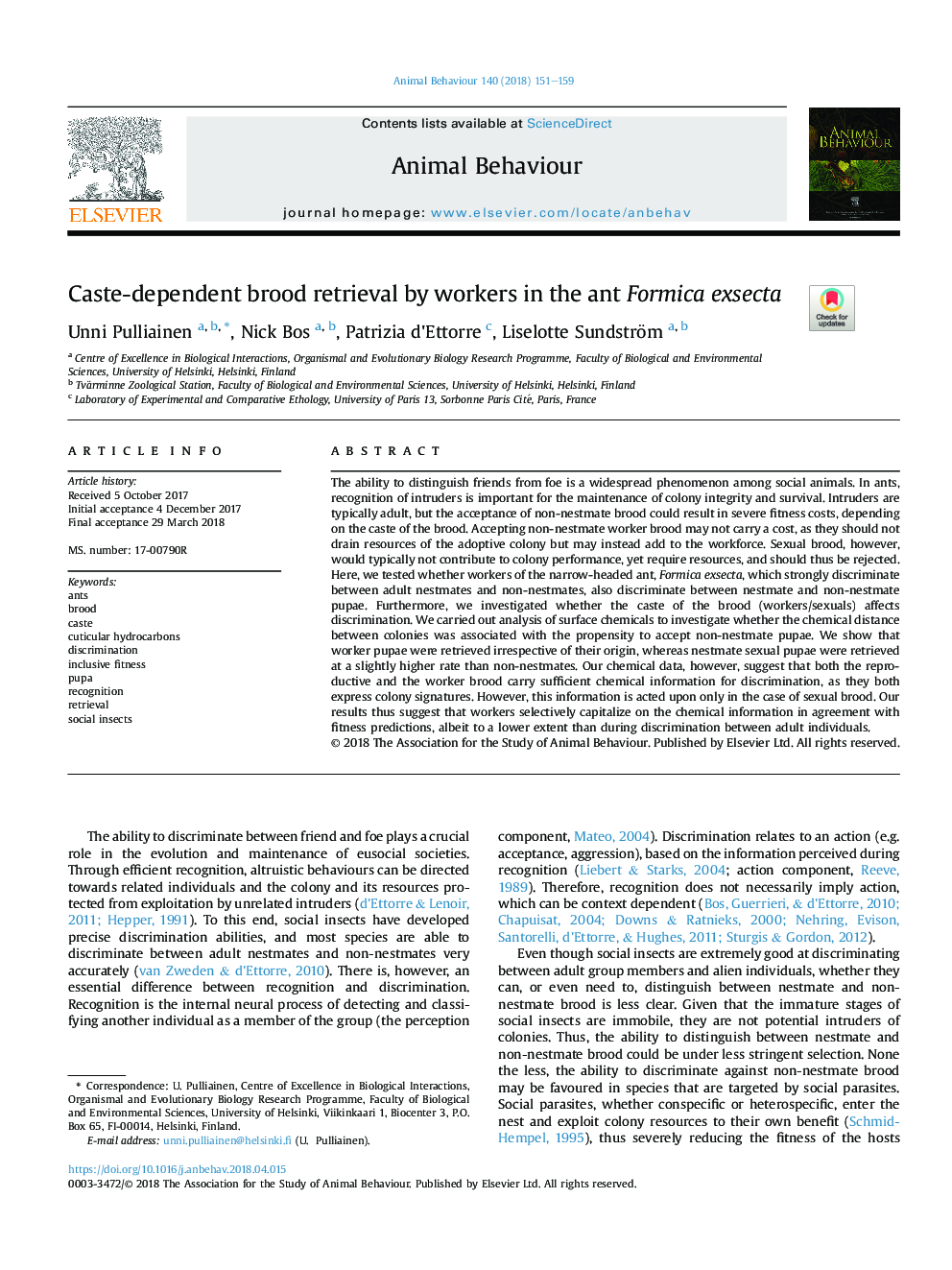| Article ID | Journal | Published Year | Pages | File Type |
|---|---|---|---|---|
| 8488533 | Animal Behaviour | 2018 | 9 Pages |
Abstract
The ability to distinguish friends from foe is a widespread phenomenon among social animals. In ants, recognition of intruders is important for the maintenance of colony integrity and survival. Intruders are typically adult, but the acceptance of non-nestmate brood could result in severe fitness costs, depending on the caste of the brood. Accepting non-nestmate worker brood may not carry a cost, as they should not drain resources of the adoptive colony but may instead add to the workforce. Sexual brood, however, would typically not contribute to colony performance, yet require resources, and should thus be rejected. Here, we tested whether workers of the narrow-headed ant, Formica exsecta, which strongly discriminate between adult nestmates and non-nestmates, also discriminate between nestmate and non-nestmate pupae. Furthermore, we investigated whether the caste of the brood (workers/sexuals) affects discrimination. We carried out analysis of surface chemicals to investigate whether the chemical distance between colonies was associated with the propensity to accept non-nestmate pupae. We show that worker pupae were retrieved irrespective of their origin, whereas nestmate sexual pupae were retrieved at a slightly higher rate than non-nestmates. Our chemical data, however, suggest that both the reproductive and the worker brood carry sufficient chemical information for discrimination, as they both express colony signatures. However, this information is acted upon only in the case of sexual brood. Our results thus suggest that workers selectively capitalize on the chemical information in agreement with fitness predictions, albeit to a lower extent than during discrimination between adult individuals.
Keywords
Related Topics
Life Sciences
Agricultural and Biological Sciences
Animal Science and Zoology
Authors
Unni Pulliainen, Nick Bos, Patrizia d'Ettorre, Liselotte Sundström,
